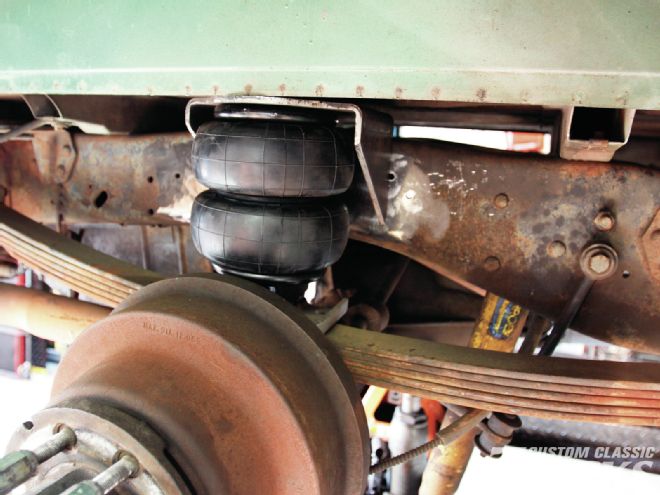
When we started on our Hot Rod Hauler, a 1973 Ford F-350, some of our goals were to lower the rear slightly, improve the ride when empty, and still maintain all of its load carrying capacity. We concluded the only practical way to get everything we wanted was with auxiliary air springs, so we turned to Joe Morrow and the crew at Chassis Tech.
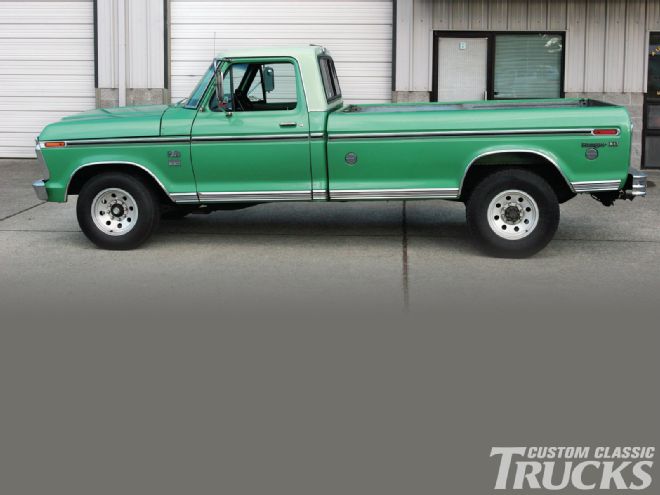 Our F-350 has always had a tail-high stance, sitting almost 7 inches higher in the rear. We wanted to drop it to near level and maintain all its load capacity.
Our F-350 has always had a tail-high stance, sitting almost 7 inches higher in the rear. We wanted to drop it to near level and maintain all its load capacity.
Chassis Tech offers two kits for installing airbags for towing applications, the Basic Kit uses 6-inch ’bags that mount to the springs and the Heavy Duty kit that uses either 7.25-inch or 8.5-inch ’bags that mount inside the frame above the axle. For this application we choose the Heavy Duty kit with the smaller ’bags, but because of the tight confines between the ’rails, we mounted them to the outside of the frame directly above the axle. Space was the primary consideration, but we also felt that placing the ’bags as far apart as possible would help stability. We should point out that in many cases these towing kits simply bolt on, but for some applications, particularly on older trucks, some fabrication may be necessary.
While it was a tight squeeze to get the ’bags between the inside of the tires and the bedsides, they do have adequate clearance throughout the suspension’s range in travel. The ’bags we used expand very little under pressure, and in most cases, ½-inch clearance all around is adequate, though we allowed for 1-inch in all directions.
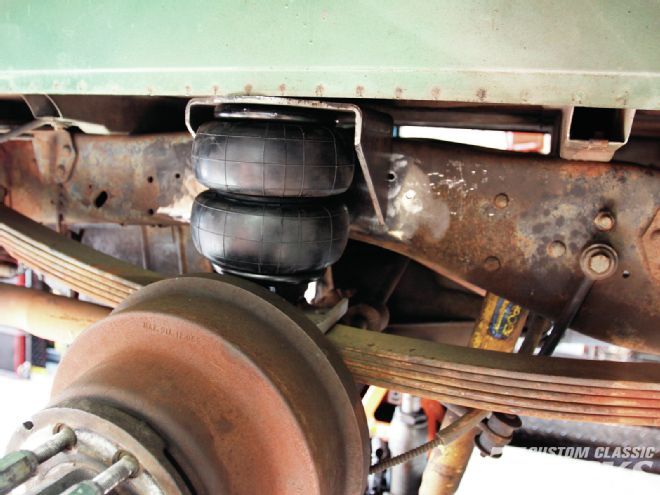
As they would no longer be needed, we removed the helper springs from each side, which also lowered the truck by ½-inch. Since the helpers didn’t come into play unless the truck was loaded we decided to remove two additional leaves from the spring pack to try and soften the ride when empty.
Disassembling the spring pack was easy enough; ironically it was something that had nothing to do with the suspension that took most of our time. Evidently the original owner had installed a trailer hitch that was subsequently removed before we got the truck. Unfortunately, remnants of the hitch were still welded to the frame right where the airbag brackets needed to be. Held in place by extremely ugly “bubble gum” welds we figured the brackets would pop right off—we were wrong. Those welds were ugly but strong and it took much longer to remove the old brackets than it did to install the new pair.
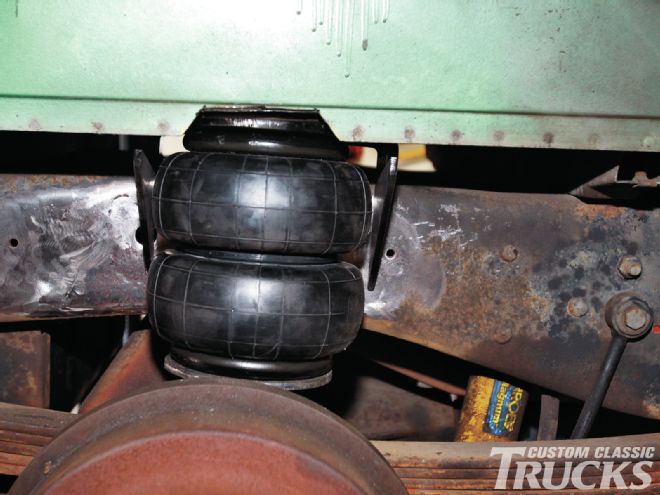 To accomplish our altitude and load goals, we turned to Joe Morrow’s Chassis Tech/airbagit.com and ordered a heavy-duty towing kit.
To accomplish our altitude and load goals, we turned to Joe Morrow’s Chassis Tech/airbagit.com and ordered a heavy-duty towing kit.
While air springs were first used in the ’20s, today most commercial trucks with gross vehicle weights of 80,000 pounds or more are equipped with them, yet there are still those who are concerned about their reliability. The fact is that unless the ’bag is allowed to rub against something, failures are virtually unheard of. Add to that the ability to adjust ride height and load carrying capacity and it’s no wonder that many high-end cars are equipped with them. Certainly they’re perfect for our purposes.
When selecting an air spring, Morrow advises that the diameter of an air spring is directly related to the pressure required to attain ride height. A small diameter ’bag will take more air pressure to support the same amount as a larger ’bag. The best bet is to always use the largest ’bag you can fit into the available space. If you do not have enough room, you should do whatever it takes to make room, even if it means redesigning the control arms or trimming the frame.
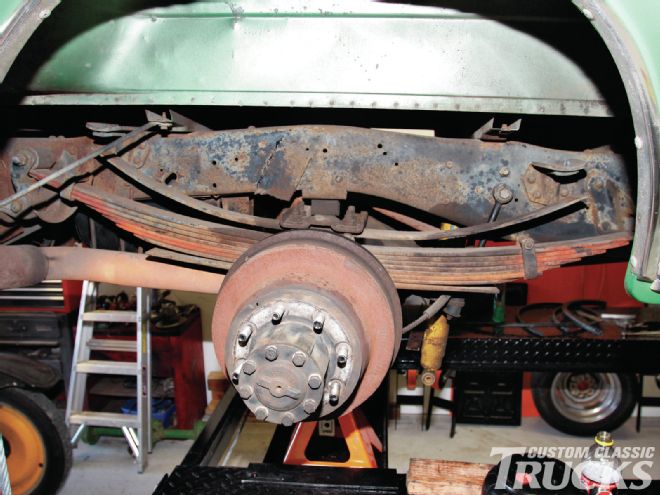 The stock spring pack had not one but two overload springs, however, the basic spring was so stiff that the truck was extremely rough riding even when empty.
The stock spring pack had not one but two overload springs, however, the basic spring was so stiff that the truck was extremely rough riding even when empty.
Check out the following photos on the installation of our rear air-bags and stick around, as next time around we’ll deal with the front suspension and the air management system. CCT